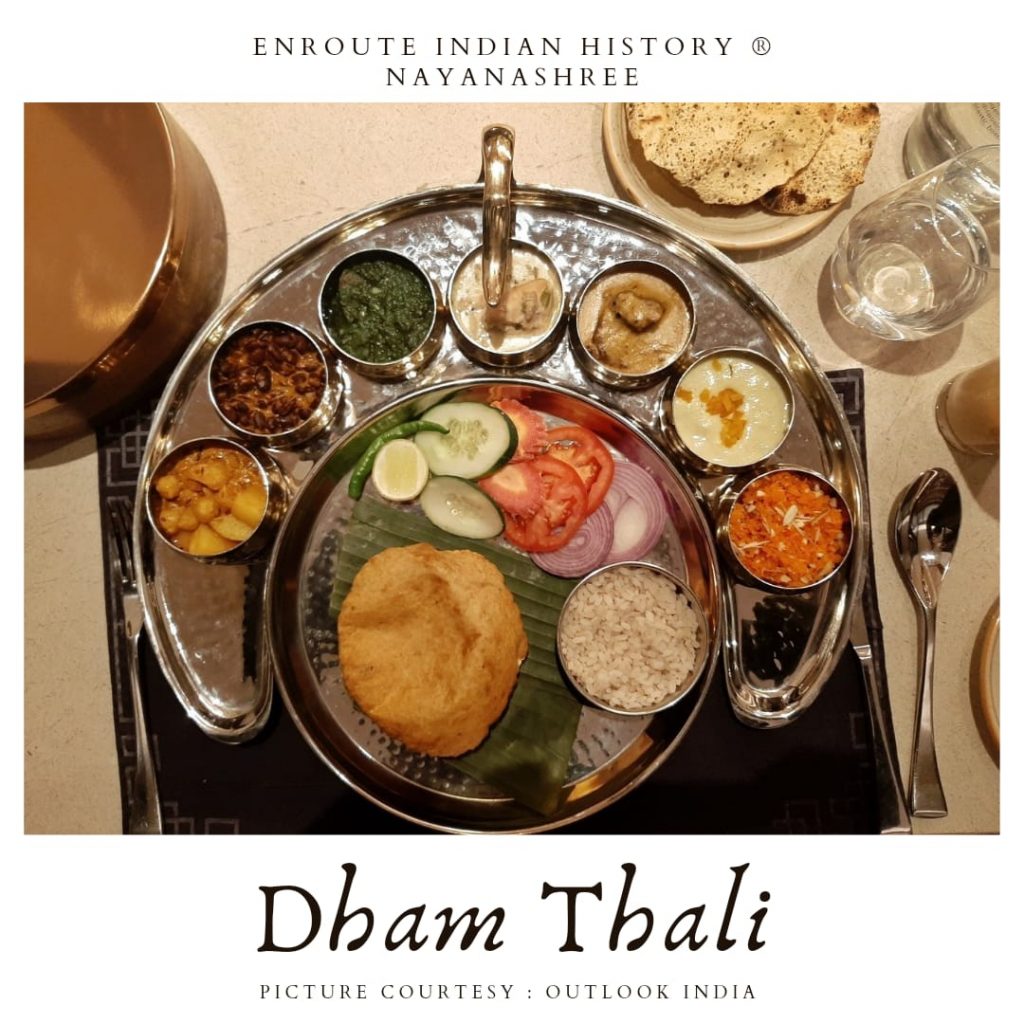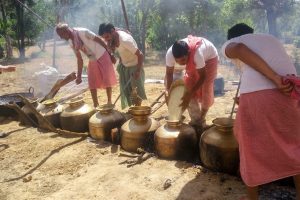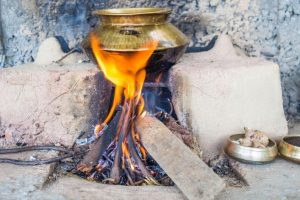
Article Written By EIH Researcher And Writer
Nayanashree Kalita
India has a diverse cuisine which is influenced by the locally available food resources, the culture, climate, geography, religion, and socio-economic conditions of a region, and thus, it varies from place to place. Located along the Himalayas, Himachal Pradesh is known not only for its serene beauty but also for its rich culture and cuisines.
Dham, a local term for a traditional feast, is a traditional saatvik vegetarian thali initially served in temples as prasad. Over time, it began to be served during special ceremonies like festivals and weddings. Like any other cuisine, dham also borrows from the history and traditions of the region and is designed keeping the geographical and climatic conditions of the state in mind. Created with staple ingredients, it is considered to be a complete nutritional food.
The various narratives regarding the origin of dham traces it back to more than 1000 years ago, to the valleys of Chamba. Legend goes that Jaisthamba, the king of Chamba, was in love with Kashmiri wazwan and asked his botis to prepare a similar vegetarian spread to offer the Goddess. Thus, a new menu evolved in Himachali cuisine – a sacred meal called the dham which included seven to eight dishes without onions, garlic or tomatoes. The dishes are prepared using mostly pulses/ legumes and is served on a pattal or leaf plate.The scarcity of vegetables in the region is reflected in the fact that most dishes are lentil and dairy based; ingredients found all year round.
Botis, hereditary Brahmin chefs in Himachal specialize in dham cooking and have been cooking it for generations. The recipes are not handwritten and are passed down orally. Strict standards of hygiene are maintained while preparing the meal. Botis or anyone who wishes to assist the making of the meal must enter the cooking area barefoot with clean hands. In ancient times, Botis were given a bagful of wheat in return of their services.

Picture Courtesy : Happiness Creativity
The preparation for this mid-day meal begins a night before. Dham is usually cooked on firewood, collected a few weeks in advance, lit in a deep trench (6×2 feet) called ‘char’ or ‘tiun’. The trench is worshipped by the boti before cooking. Thick pot-shaped copper and brass vessels called ‘Charoti’ or ‘Batloi’ are used to cook the dishes. These utensils help keep the food warm for a longer period because of their narrow openings. Broad iron kadais (cauldrons) are used to prepare khattas.

Picture Courtesy : Red Coral Experiences
The dishes of Himachalidham differs from region to region based on the local produce.Typically, dham comprises of madra, teliyamaah, chana dal, khatta, and boondikameetha, all cooked in mustard oil on low flame. Chambyalidham focuses on rajma, while Mandiyalidhamleans towards spinach. Kangridham is famous for its teliamah (black lentil dal). While lower Himachalidham is vegetarian; with time, due to the colder climate, upper Himachal included meat in their dham.
Of the several common dishes that each dham includes, madra is curry cooked slowly over low fire. It is originally attributed to the region of Chamba, and its spread to Kangra has been associated with the brides of Chamba. Two to three madra dishes are included in a typical dham (Sepubadi Madra, Kaalachanamadra, Safed Chana Madra, Rajmah Madra, Guchhi Madra, etc.), and all are curd-based. Khatta, prepared with mango powder and Tudkiya Bhath, a type of pulao, are a few other common dishes.
Traditionally, pattals (plates are made of dried leaves of sal or banyan trees, weaved together with thin pleats of bamboo wood) are used as thalis for dham. Irrespective of their status, people sit in a line on the floor to relish the meal, a practice which is said to imbibe the feeling of universal brotherhood among the local communities.Thus, dham is not just a feast but a representation of a Himachali identity which is diverse, yet united.
Bibliography:
- Himachalidham: Food, culture, and heritage byMonicaTanwar, BeenuTanwar, Rattan S.Tanwar, VikasKumar, and AnkitGoyal
- Dham – Traditional food of Himachal Pradesh by PoonamBachhav (blog)
- Mandiyalidham by Suma Gandlur (blog)
- Dham across Himachal Pradesh & Where to Eat It? by ShubhamMansingka (blog)
- Cuisines from the heart of Himachal by RuchikaGarg (published in the Himachal times)















